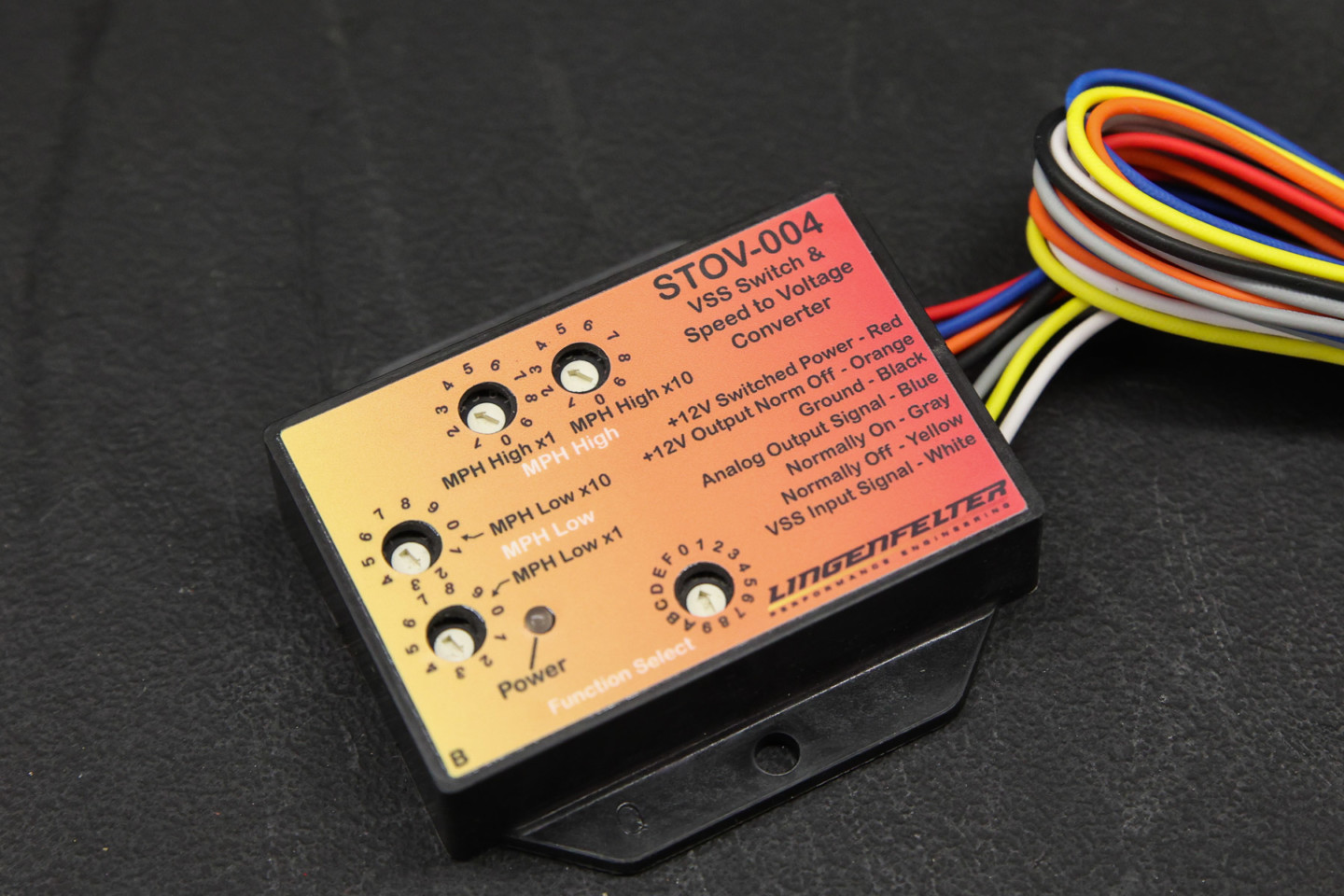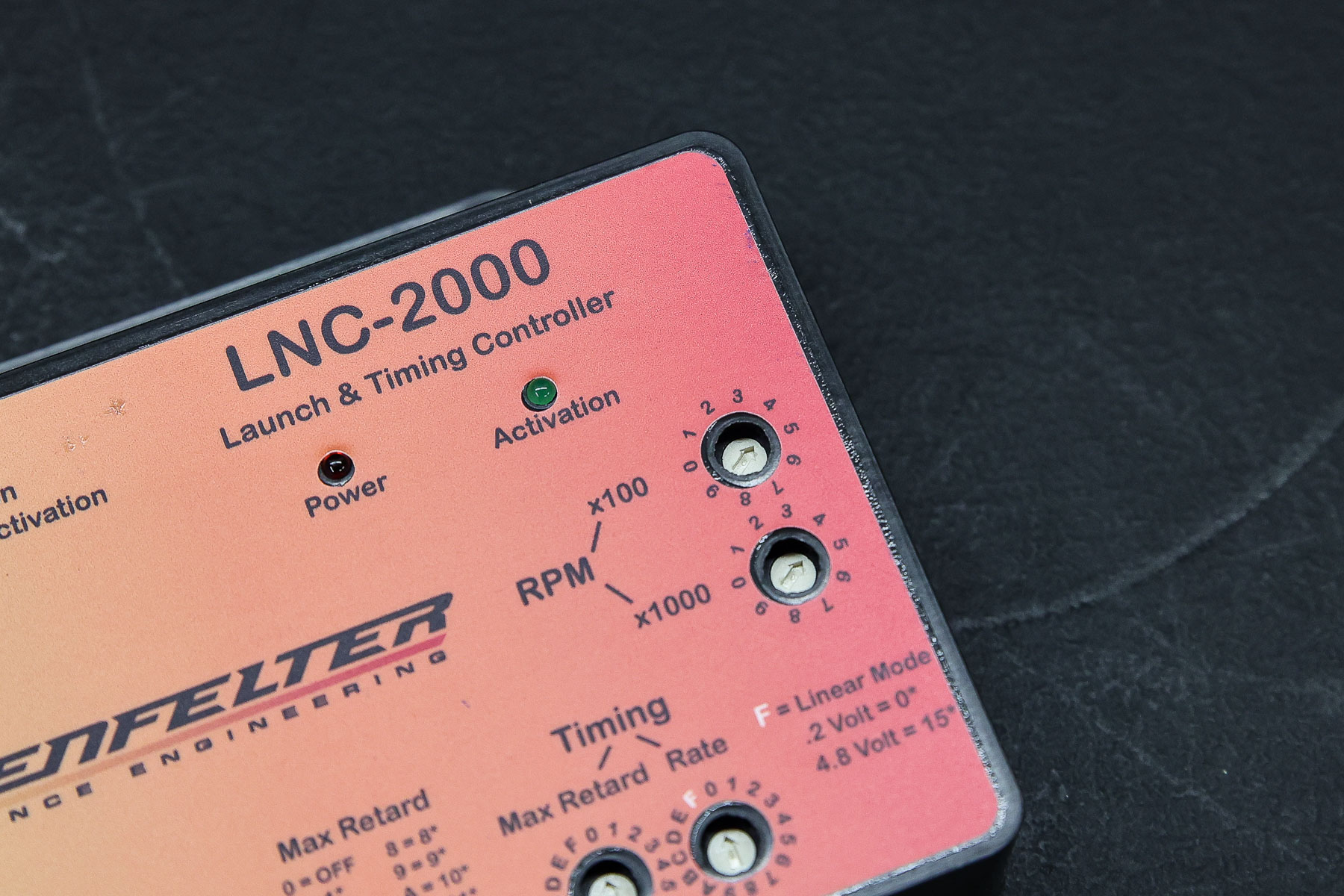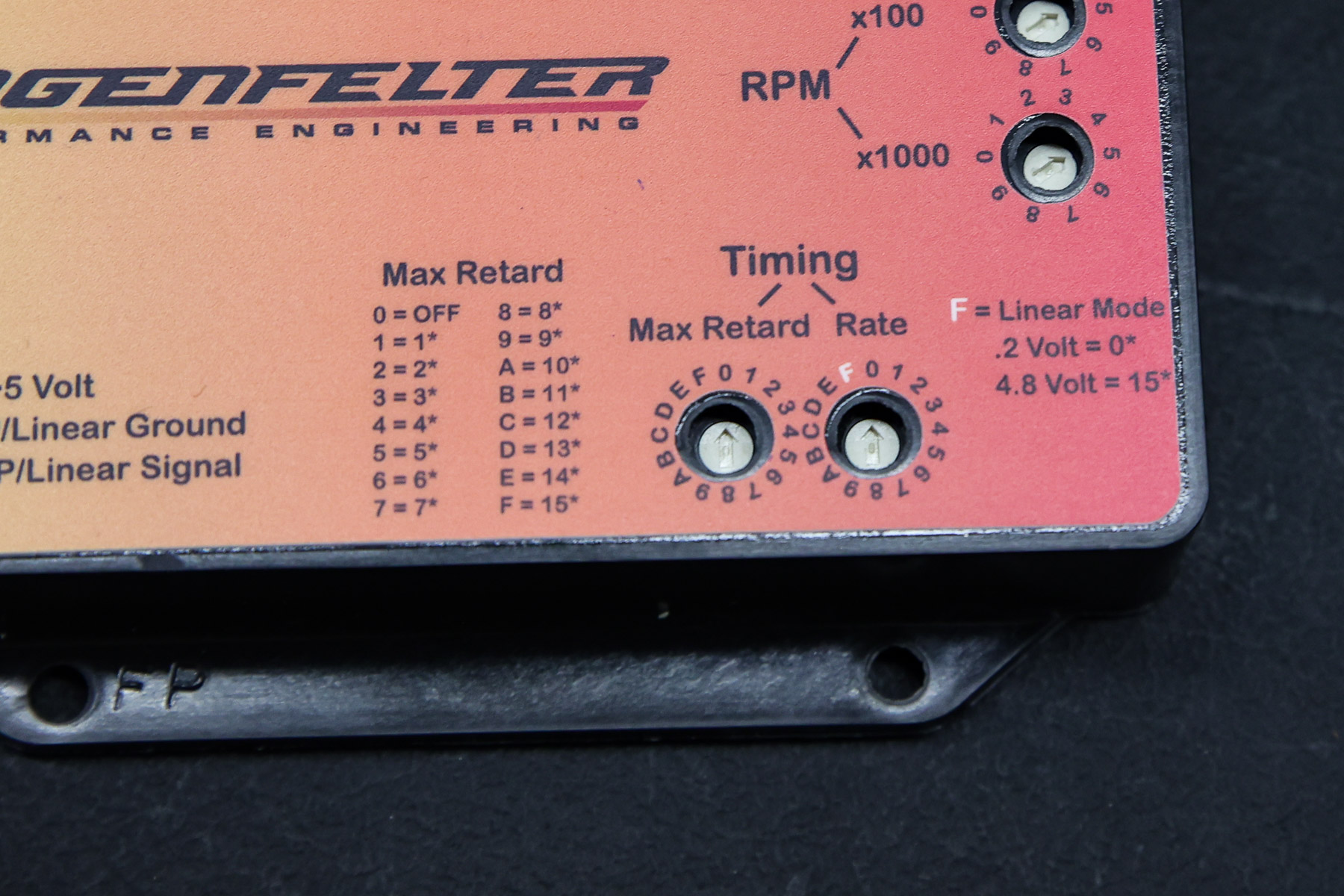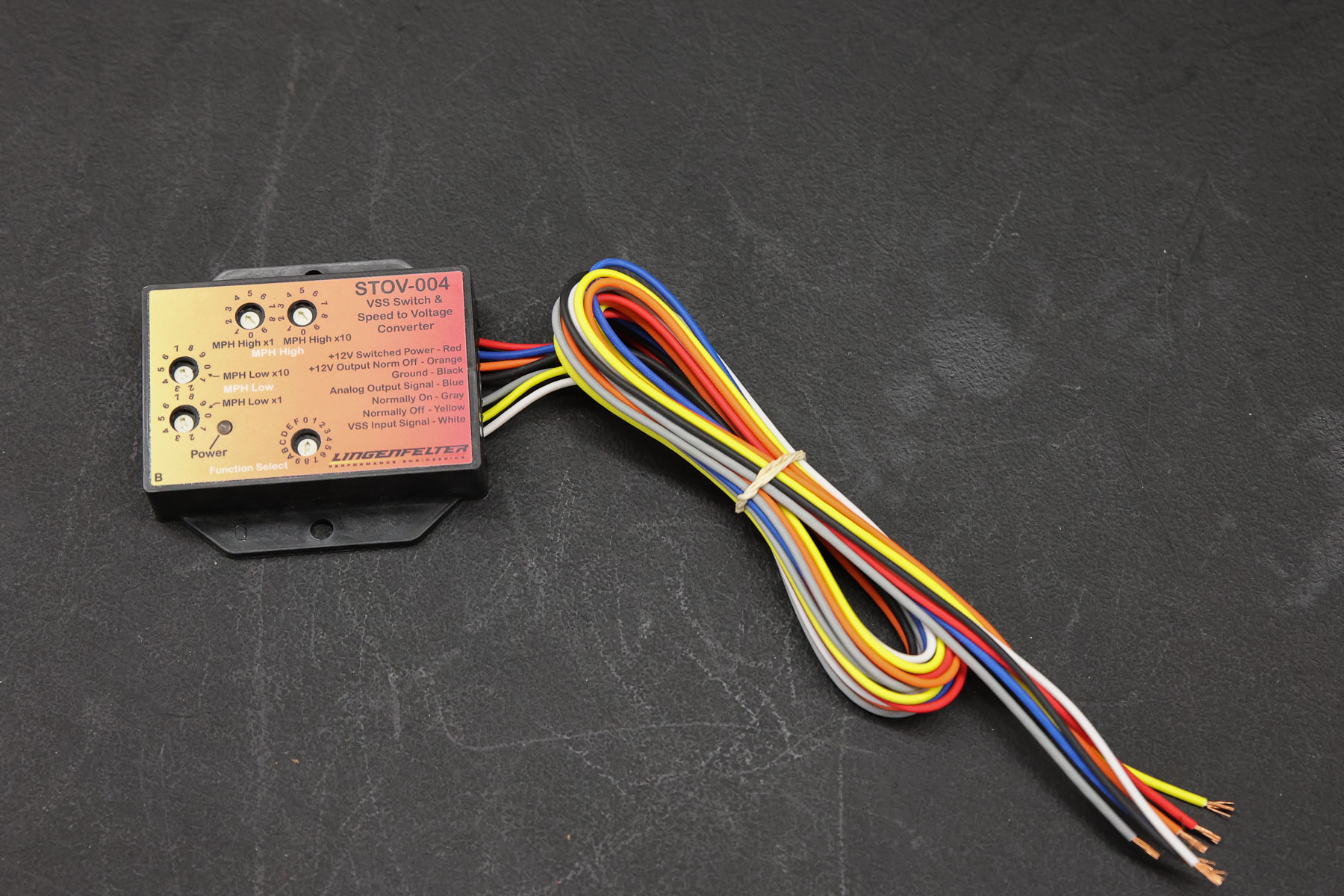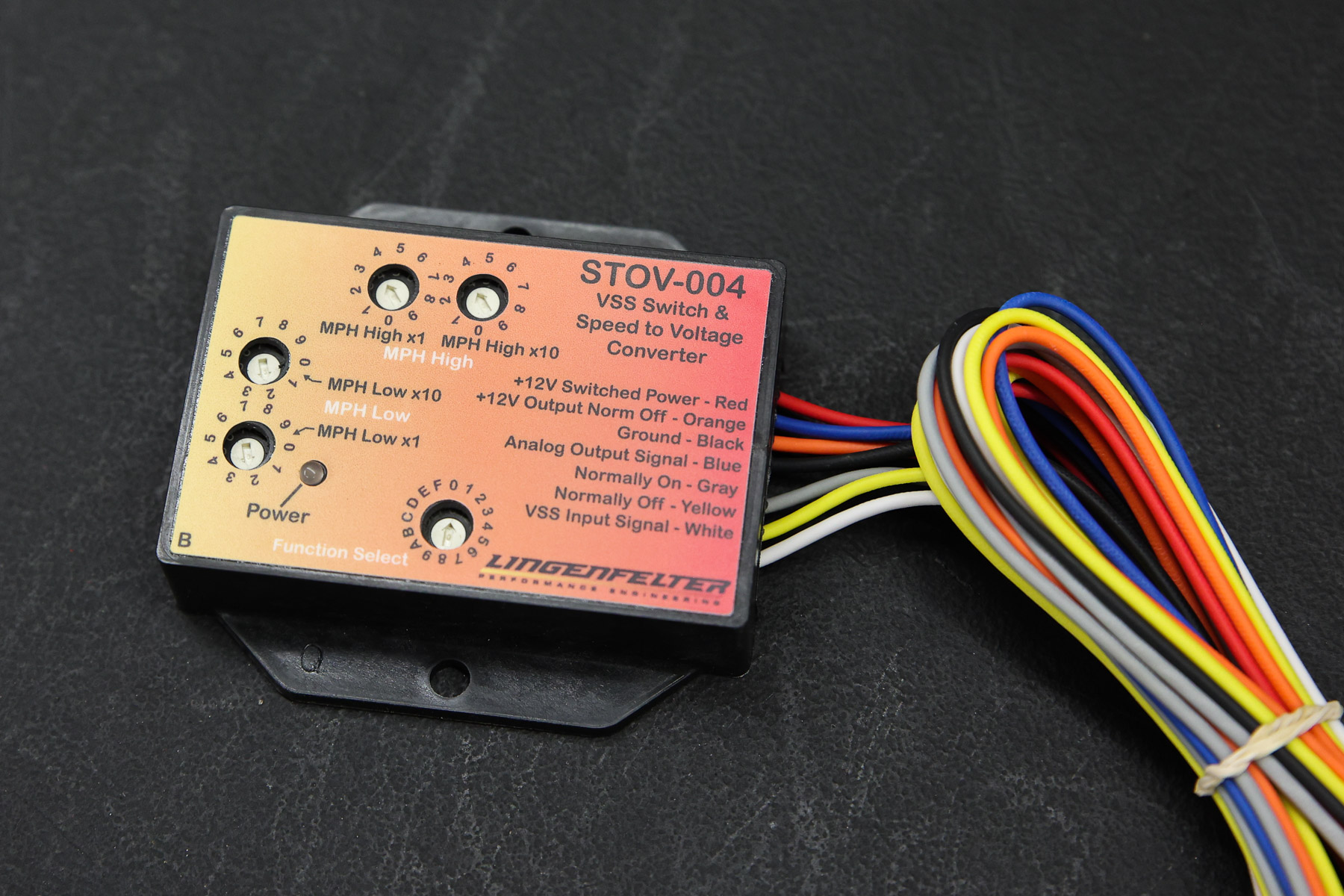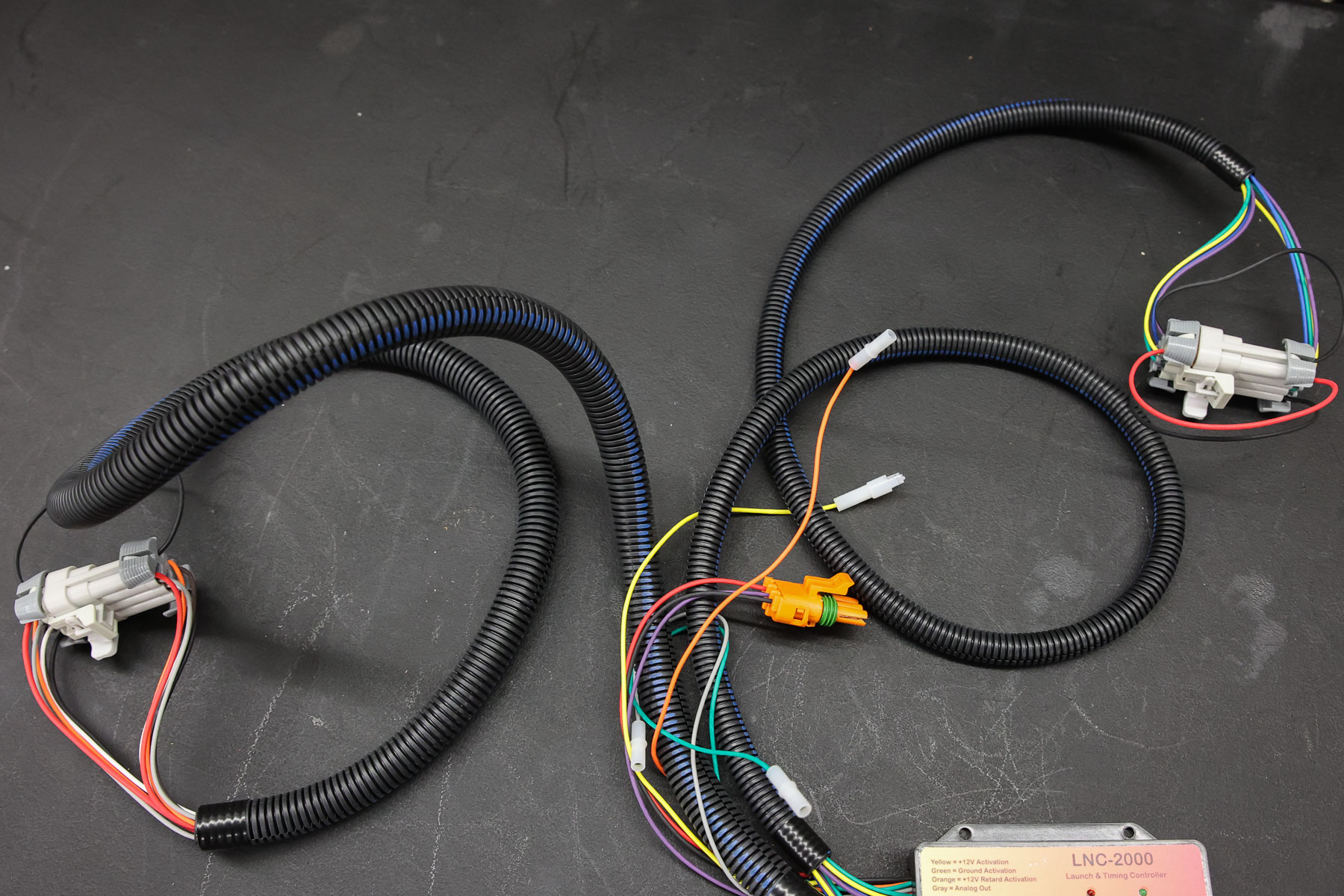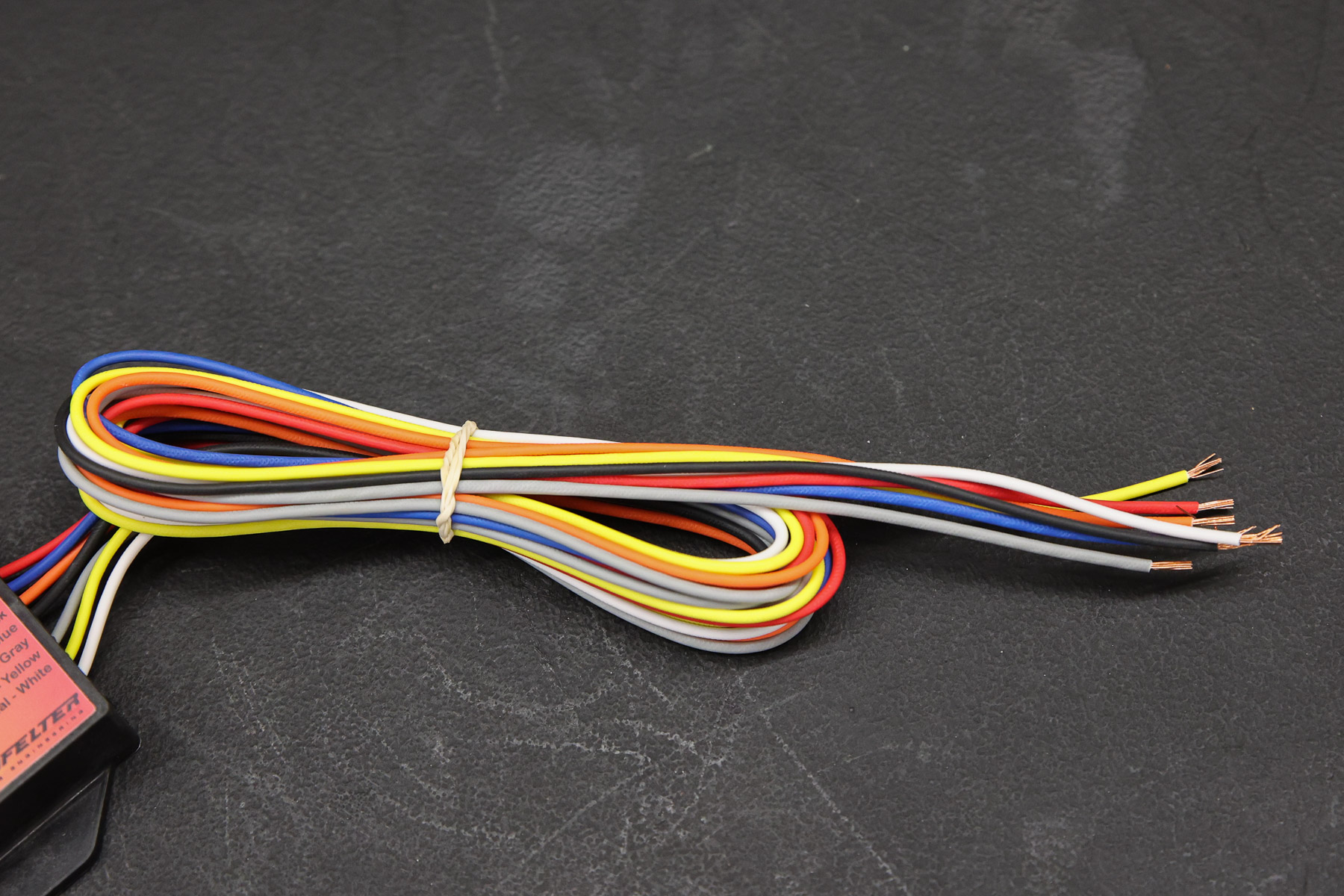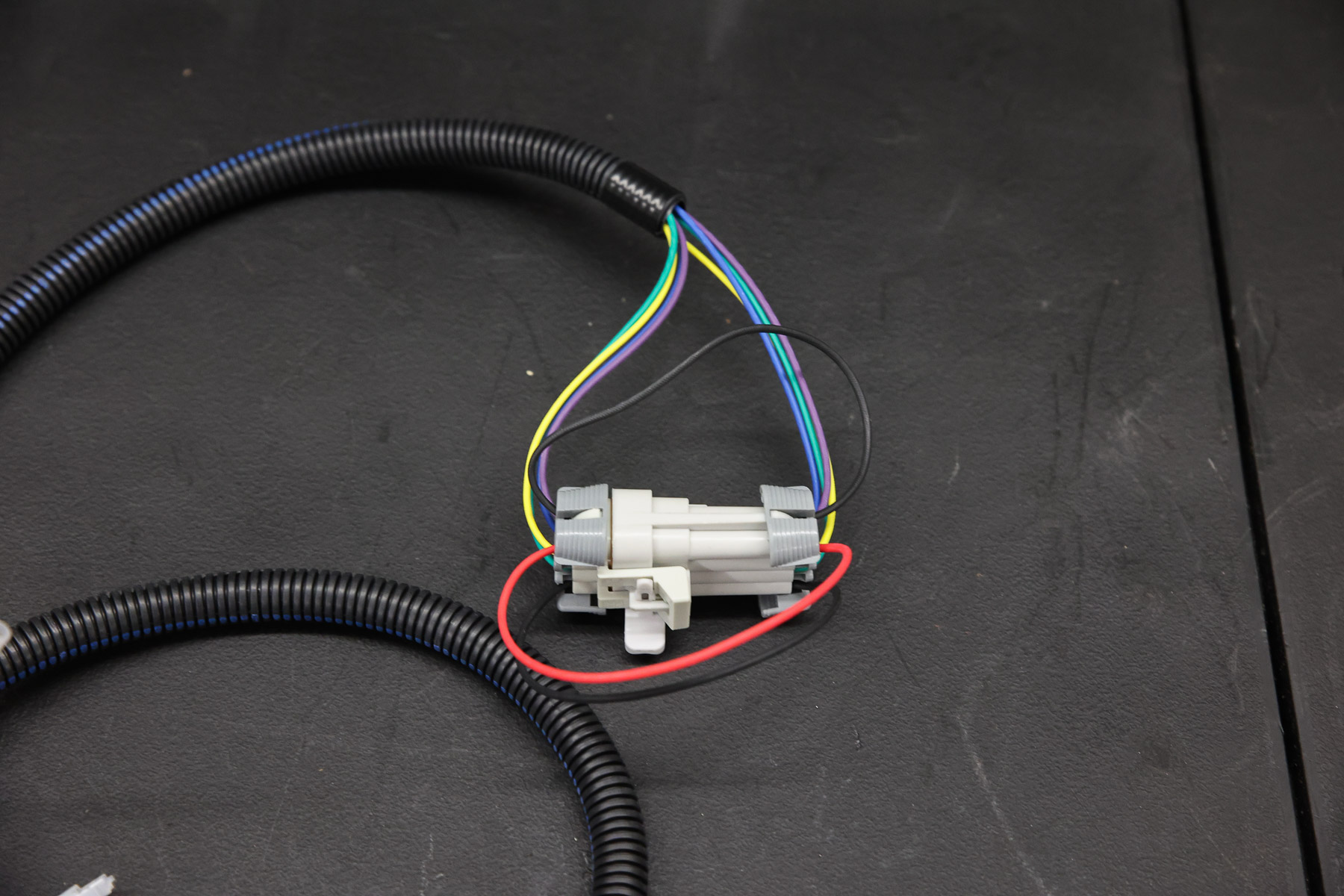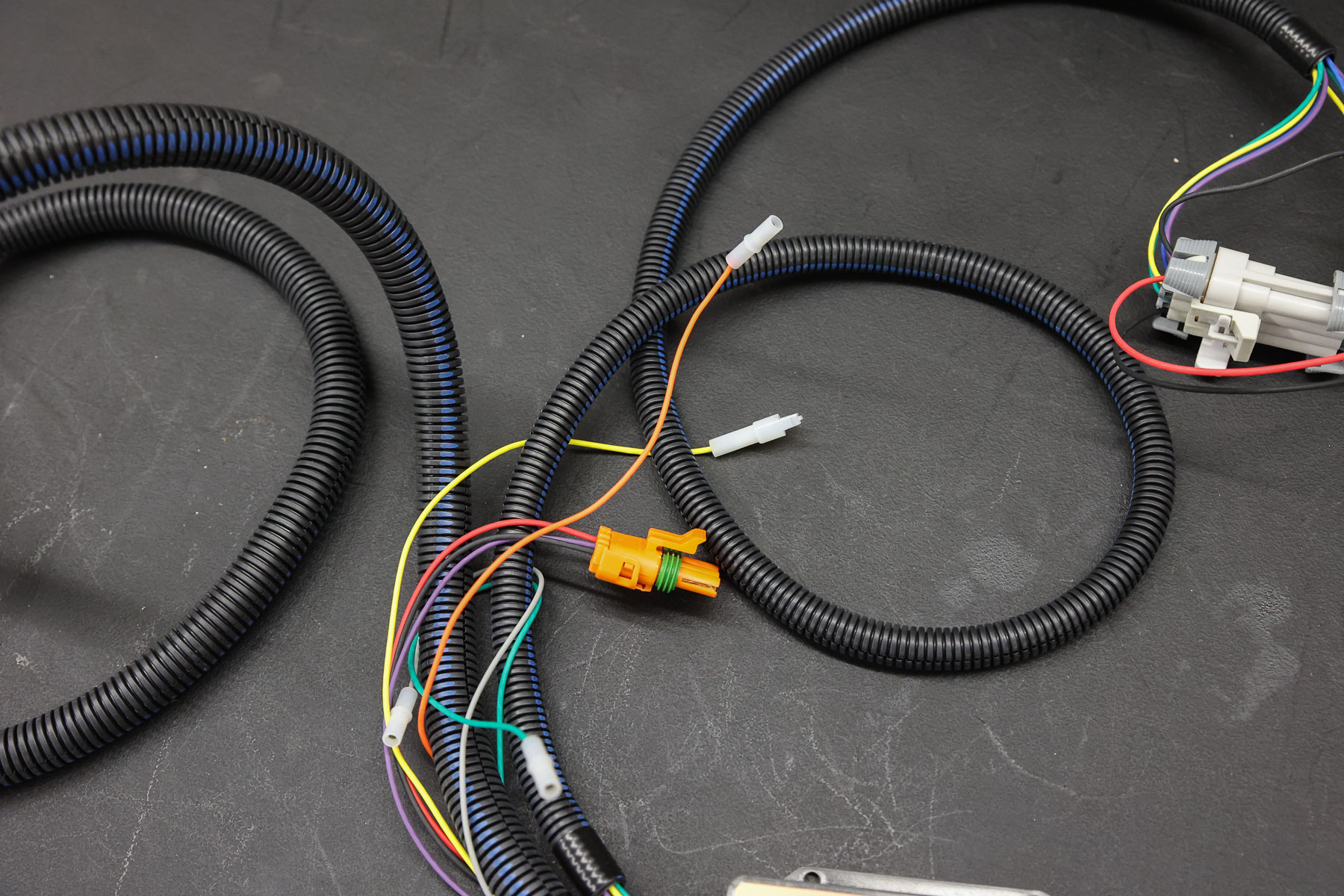Project Red Dragon’s power-adder conversion from nitrous to forced induction has required us to make a lot of changes to the car. We’re going to need to build boost before each pass, and that means we need a way to control the RPM and turn off the launch control. Since we’re using the factory ECU, that can be tricky. Thankfully, Lingenfelter Performance Engineering (LPE) has some products that will make this easier.
A boosted application that doesn’t use the factory ECU has a lot of available options when it comes to ways to build boost via a 2-step device. Most aftermarket ECUs have a two-step built-in, or if you’re not using EFI, you can use the two-step function built into the ignition box you’re using. We’re going to add an LNC 2000 launch controller to our Pontiac to act like a two-step, along with a STOV-004 vehicle speed-based switch to make sure the LNC 2000 shuts off during a pass.
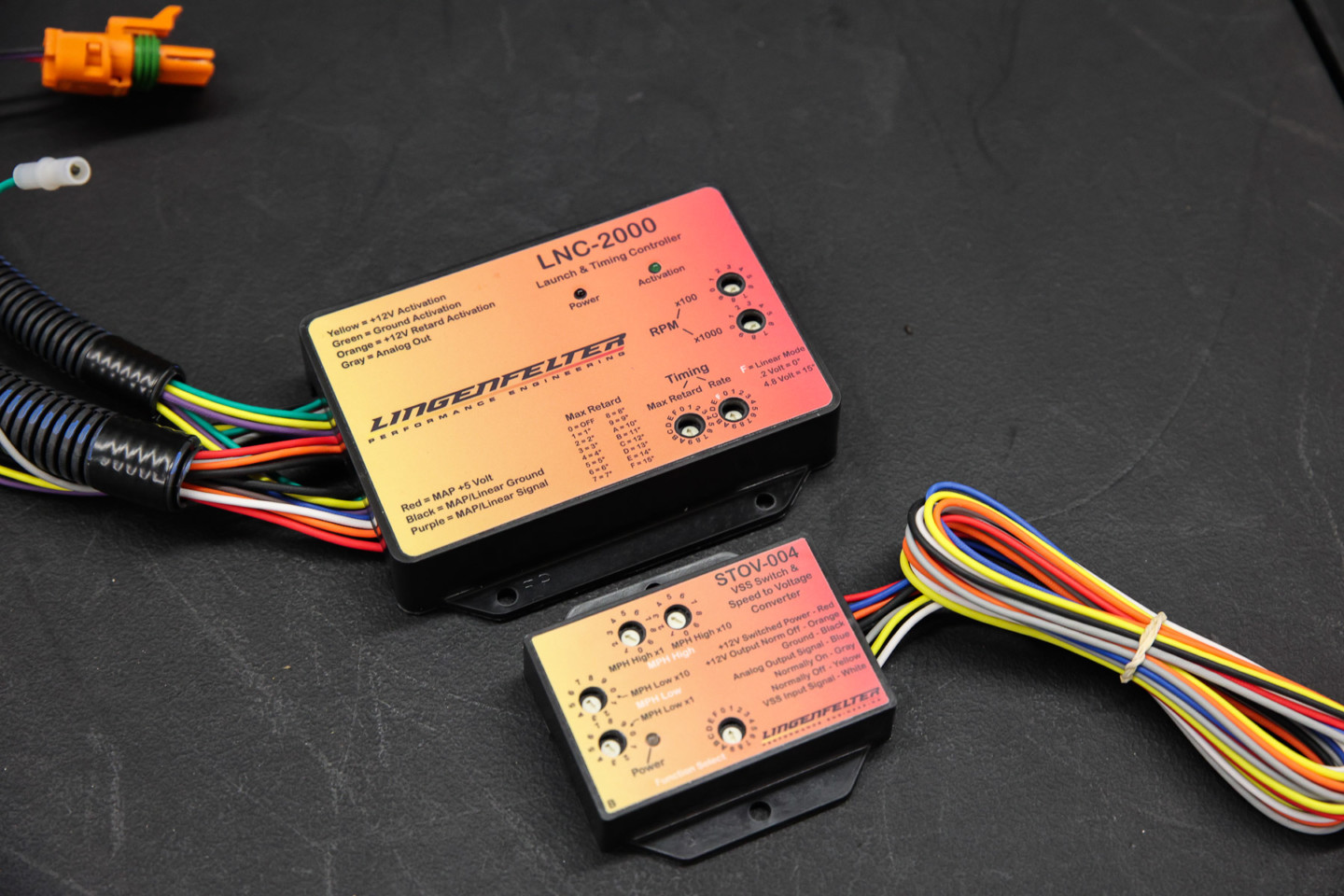
The LNC 2000 launch controller and STOV-004 vehicle speed-based switch don’t take up a lot of space at all.
An Overview Of The LNC-2000 And STOV-004
The LNC-2000 is designed to control your vehicle’s RPM and also act as a timing-retard controller. A turbo application like Project Red Dragon can use the LNC-2000 to retard timing when at the starting line to assist with building boost. The LNC-2000 isn’t a traditional two-step, hence why LPE refers to it as a launch controller. A typical two-step has a high and low RPM-limit function, whereas the LNC-2000 only has one RPM limiting function.
Ryan Gledhill from LPE explains how the LNC-2000 works and why it’s perfect for vehicles that use an OEM ECU.
“The LNC-2000 allows you to program a set RPM to leave the line, as well as give you multiple ways to retard ignition timing for your application. The RPM-limiter function of the LNC-2000 disables the spark to individual cylinders and not fuel like most production RPM limiters. The timing-retard capabilities of the LNC-2000 can be used to retard timing by up to 15 degrees. In turbocharged and supercharged engines, the amount of retard can be controlled by the boost level using the three-bar MAP-sensor input.”
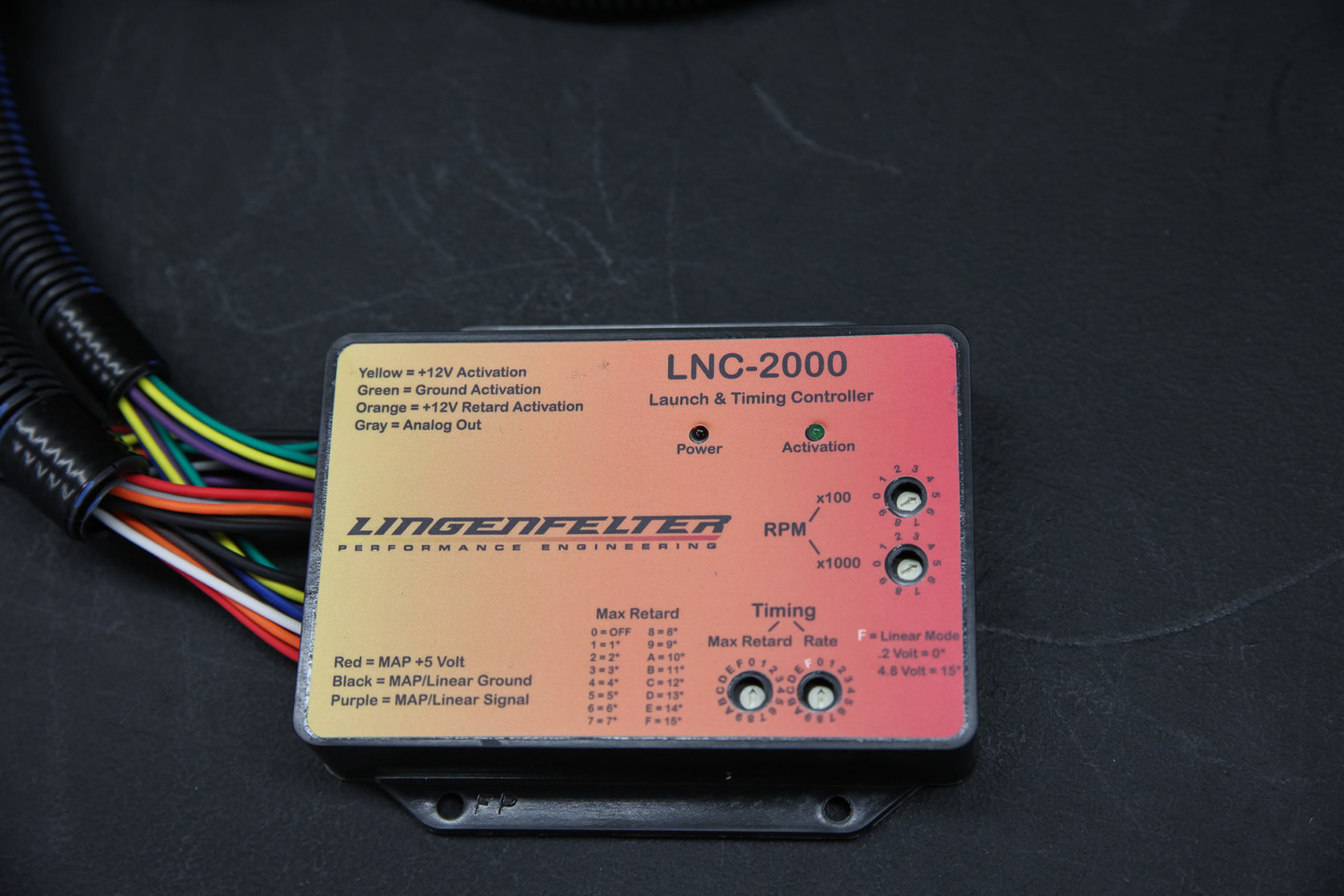
The LNC-2000 is a great solution for those who are still using an OEM ECU because it can easily be integrated into any vehicle.
If you’re going to run a two-step or launch controller like the LNC-2000, you’ll need a way to disable it once your vehicle starts moving. The last thing you want is the two-step or launch control to activate during a pass during a gear change. This issue is solved by installing the STOV-004.
“The STOV-004 is a speed-based switch that can be integrated into a vehicle’s electronics pretty easily. Think of the STOV-004, much like an RPM window switch, but instead, uses the vehicle’s speed sensor to control components or devices. It can be used to turn on a component, turn off a component, or disable it all based on the vehicle’s speed. It also produces a gear shift output that can be used with other components, like boost or nitrous controllers that incrementally count the gear changes to change their programs,” Gledhill explains.
Why The LNC-2000 And STOV-004 Are Perfect For Vehicles With An OEM ECU
The OEM ECU in most vehicles is capable of some amazing things, but they do have their limits. For a turbo application, you can’t just put your vehicle on the rev limiter to build boost. While it would work, it wouldn’t work for long. That’s why we decided to use the LNC-2000 for our project, it provided us a solution to make boost with our stock ECU.
The LNC-2000 not only provides a safe RPM limit to build boost, but it also helps make sure you can leave on the same amount of boost each time.
“The LNC-2000 is helpful on turbo applications because it will maintain a consistent RPM for your launches. That means you’re going to build a consistent amount of boost each time you’re making a pass. You want that type of consistency for engine tuning purposes. Plus it will make it easier for you to set up the suspension to really lower your 60-foot times,” Gledhill says.
The LNC-2000 uses simple dial switches to add or subtract the amount of timing and rpm you want to use when the unit is activated.
Another reason the LNC-2000 is a great fit for most stock ECU applications is its timing-retard function. If you’re using a GM three bar MAP sensor, the LNC-2000 can control the amount of timing retard per pound of boost, up to 15-degrees.
The LNC-2000 can even control timing if you’re not using the vehicle’s MAP sensor too.
“If you are using the ECU spark maps to control timing based on boost/airflow, you can apply a programmed amount of timing retard, up to 15-degrees, when the launch controller is activated. Retarding the timing drives more heat into the exhaust, and can help spool the turbo(s). This helps you build more boost than you would normally be able to without the timing retard,” Gledhill explains.
The STOV-004 is clearly marked with what each wire does to make installation easy.
So you got your two-step or launch controller and you’re building boost, now you have to shut it off when you’re vehicle starts to rocket down the track. The STOV-004 is the solution to that issue and it works great for our application.
We decided to use the STOV-004 because of how simple it is and it’s designed to work in tandem with the LNC-2000. You just have to wire in a vehicle speed output signal from an engine control module, or you can use one of your vehicle’s speed sensors. That’s all it takes to get the STOV-004 integrated into your vehicle.
The LNC-2000 and STOV-004 both come pre-wired from LPE. The LNC-2000 uses GM-style connectors.
“The most common way we see these two devices used together is in a manual transmission application. You would use the STOV-004 to interrupt the clutch switch signal to the LNC-2000 when the vehicle is in motion. That way, the launch controller won’t activate when you make gear changes. You can use both devices in a vehicle that has an automatic transmission too. In that application, the STOV-004 would interrupt the brake pedal switch signal in a car that is being launched via the footbrake method,” Gledhill says.
Lingenfelter Performance Engineering’s LNC-2000 and STOV-004 are the perfect combo to solve our boost-building problem with Project Red Dragon. Now we can easily spool up our VS Racing turbo on the line, and also have a way to turn off the LNC-2000 via the STOV-004 when the car starts moving down the track. Make sure you check out the Project Red Dragon page right here on Dragzine to see what we’ve done to the car, and follow our future progress with the project.




